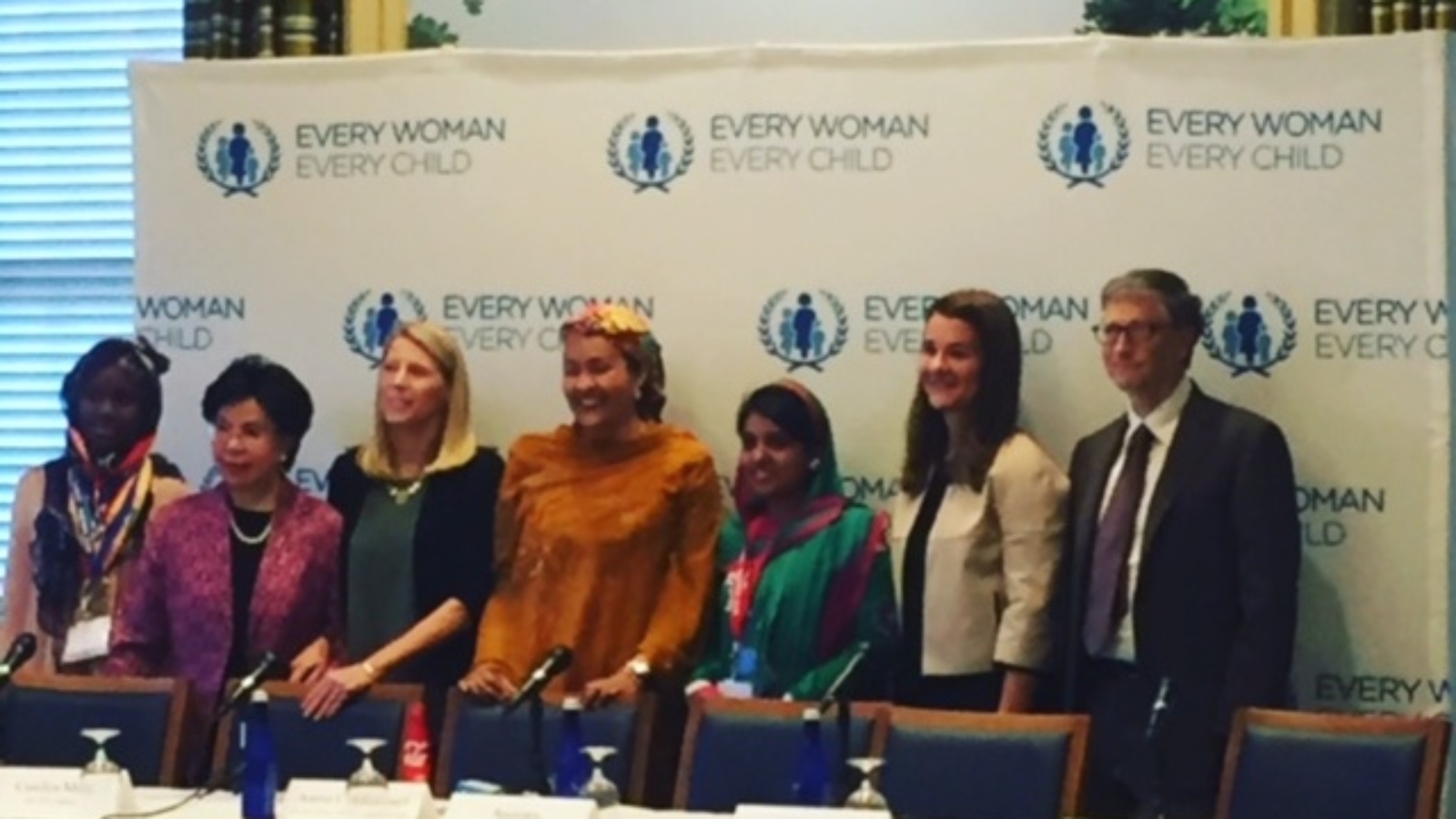By Karina Taylor
This current session of the United Nations General Assembly is a few weeks old and already legendary in its own right. The organization, formed in 1945, celebrates its 70th anniversary this year. Pope Francis, received not only as an internationally beloved and influential figure but a head of state in his own right, spoke to the General Assembly — a first for the sitting pope.
Even more significantly, Francis’ address opened the Sustainable Development Summit, where international figures shared their hopes for the U.N.’s universal post-2015 agenda, the Sustainable Development Goals (SDGs). The day before the Holy Father counseled the world’s leaders on the significance of this mission, a series of shorter speeches were made to the press a few blocks away from the U.N.’s General Assembly hall, at the Yale Club. The smaller venue did not feature a corresponding decrease in influential figures in the room: joining the Secretary-General’s special adviser on the post-2015 agenda, the president and CEO of Save the Children, and the head of the World Health Organization on the panel were none other than Bill and Melinda Gates.
Their presence — more accurately, the very real promise of funds that their presence implies — is meant to answer a crucial question for the post-2015 agenda. A recurring theme surrounding discussions of the SDGs was “implementation, implementation, implementation.” Like many “side events” taking place within the orbit of the United Nations at this time of year, the importance of this press briefing lay in outlining the specificity of the mission, but here the players went further and attempted to outline how their shared vision would become a reality.
This particular assemblage of health and development luminaries came together to announce the launch of the U.N.’s Global Strategy for Women’s, Children’s, and Adolescents’ Health, more commonly known as “Every Woman, Every Child.” The “multi-stakeholder” partnership, with civil society representation primarily split between the Gates Foundation and Save the Children, is meant to tackle the SDGs related to global health, gender equality, and education from a gendered, age-specific perspective. The two additional panelists, “young champions” identified by their first names only as Anoyara and Suhalia, served as both representatives of their respective causes and the embodiment of the project’s chief demographic concern: young women living in societies that prioritize work over education, and marriage and motherhood over childhood.
These two pairs — the young women and the Gates couple — represent two very distinct challenges to implementing universal sustainable development. The more obviously challenge (funding) was addressed both directly and obliquely by those on the panel fronting non-governmental organizations. Save the Children’s Carolyn Miles had ready numbers when confronted with the question of how her charity would do its part: a “single-year pledge” of “$250 million” for 2016, to continue efforts to prevent the death of children under five. Bill Gates took a longer view, emphasizing the importance of strengthening the economies of regions riddled with poverty and conflict.
Gates fielded a question about how much the “billionaires club” will play a role in implementation by reminding his audience that “domestic resources [can] increase as economies grow” providing that those “steer[ing] the growth have the right priorities.” He said that the private sector can oversee “the construction of better roads, [the procurement of] better seeds” and while philanthropic gestures and donations don’t make up as much as expected in terms of development funding, those funds are critical to the pursuit of “risky research”, like the pursuit of HIV or tuberculosis vaccines.
The second, less obvious challenge to development is penetrating cultural barriers. A frequent feature of Melinda Gates’ contribution to the briefing was reproductive rights; Young Champion Anoyara has battled human trafficking; her fellow Young Champion Suhaila seeks to end the stigmatization of the HIV positive. The improvement of all of these issues was partially addressed by the World Health Organization’s Dr Margaret Chan’s refrain of “partnership and synergy with all humanitarian sectors,” but even she later admitted that “cultural diversity is good, but it makes the work harder.”
This sentiment was echoed by both young women, but Anoyara especially, as her efforts to stop children from being trafficked for marriage or work were met with resistance from her own community, who viewed the traffickers as people that would provide their children access to a better life. Suhaila is working to uproot a fear of communal contamination that HIV’s twenty-year rampage has only strengthened. Melinda Gates’ plans for female education, maternal health, and family planning are logical, and compassionate, but multiple components would be rejected by various interest groups in her own home country of the United States. These include but are not limited to insurance companies unwilling to pay for longer hospital stays for mothers experiencing difficult births, and cultural conservatives who deny the need for women to exert control over their ability to reproduce.
Cultural differences are an underlying challenge facing the implementation of the SDGs due to their universal aim and intent, but nowhere is this more obvious than in the case of women and children’s rights. “Every Woman, Every Child” has a clear and thoughtful set of targets meant to deepen the U.N.’s approach by fostering connection between health and nutrition and the broader concepts of economic independence and universal education.
The challenges of implementation will require greater involvement in the knotty relationships that make communities – those between leaders and their people, husbands and wives, as well as parents and their children. Inserting predominantly Western concepts of human rights into those dynamics will require more than “He for She” from those at all levels of power. It will require a more universal outlook of the strong empowering the weak — or rather, an “Us For Them” mentality.
*****
*****
Karina Taylor is an editorial assistant at World Policy Journal.
[Photo by Karina Taylor]
